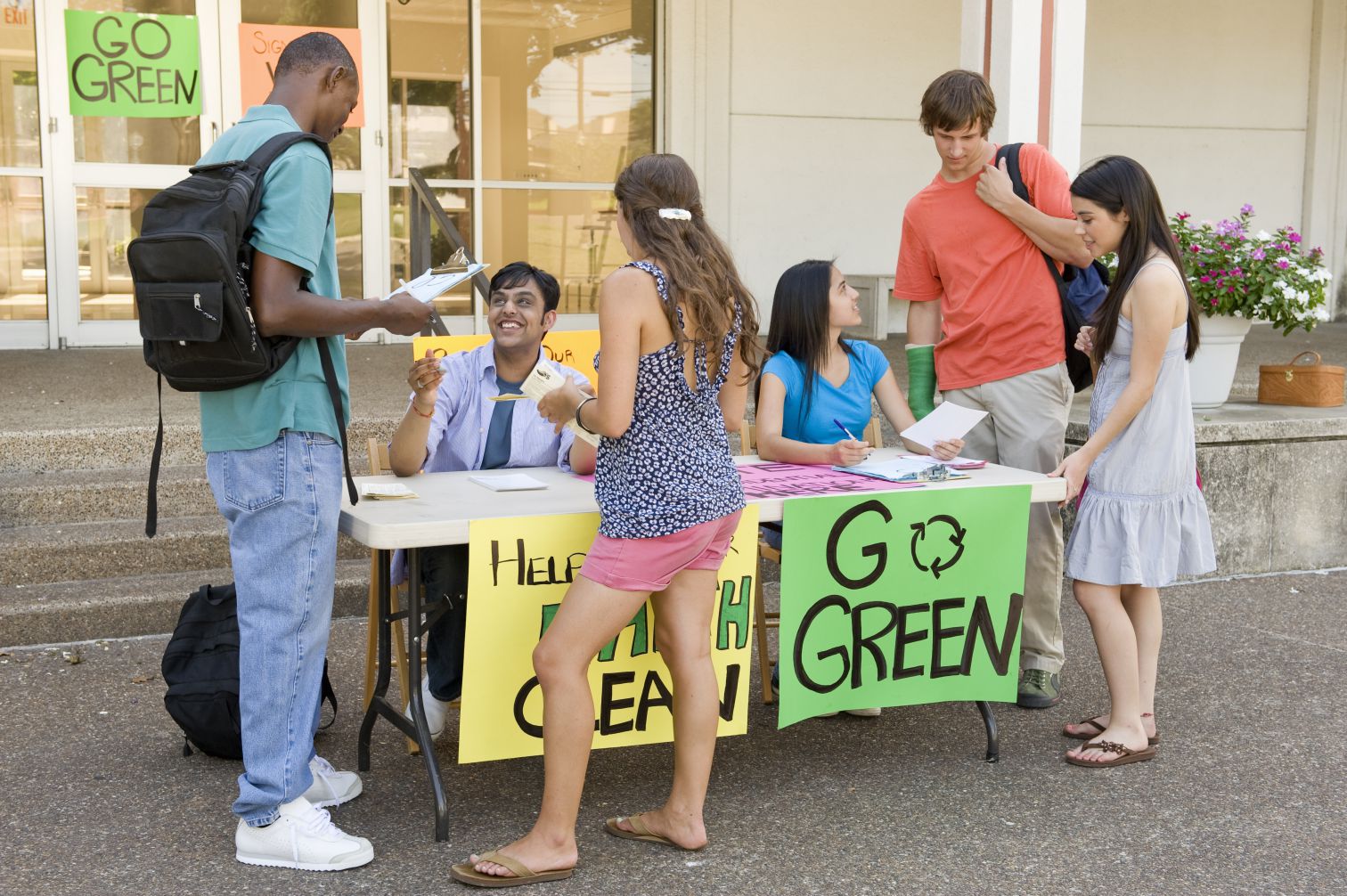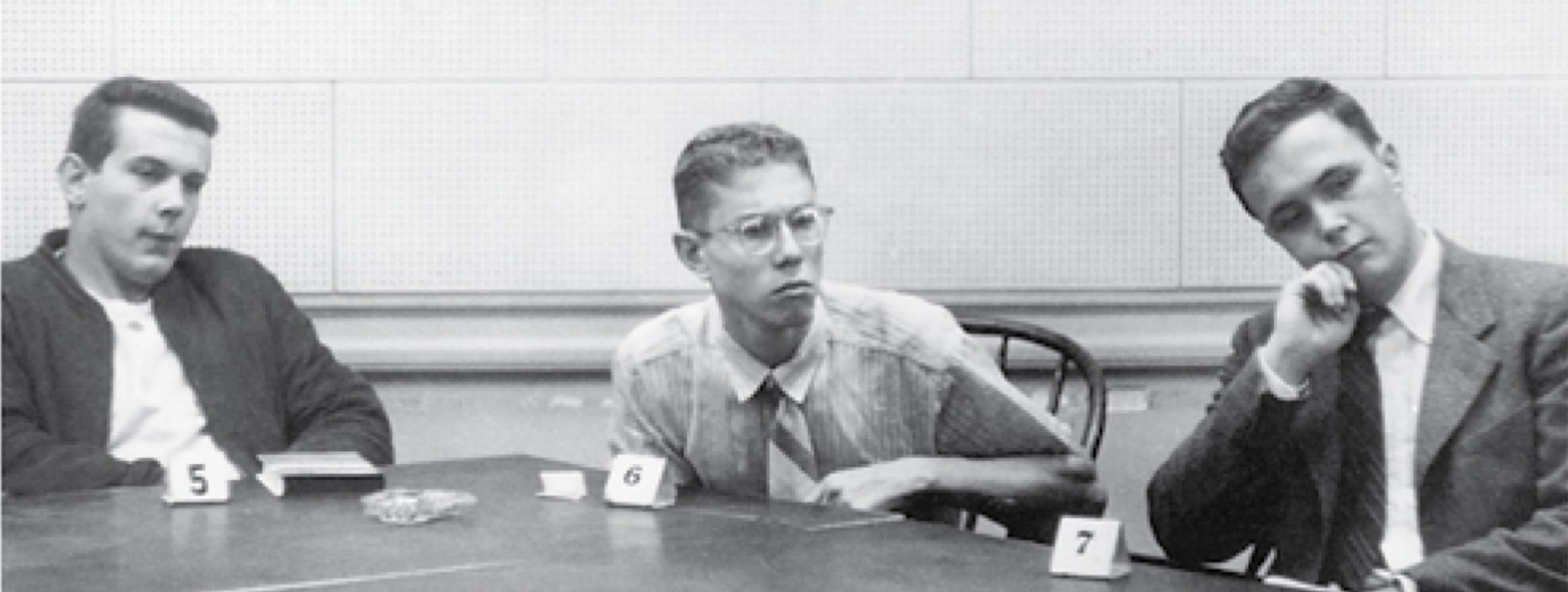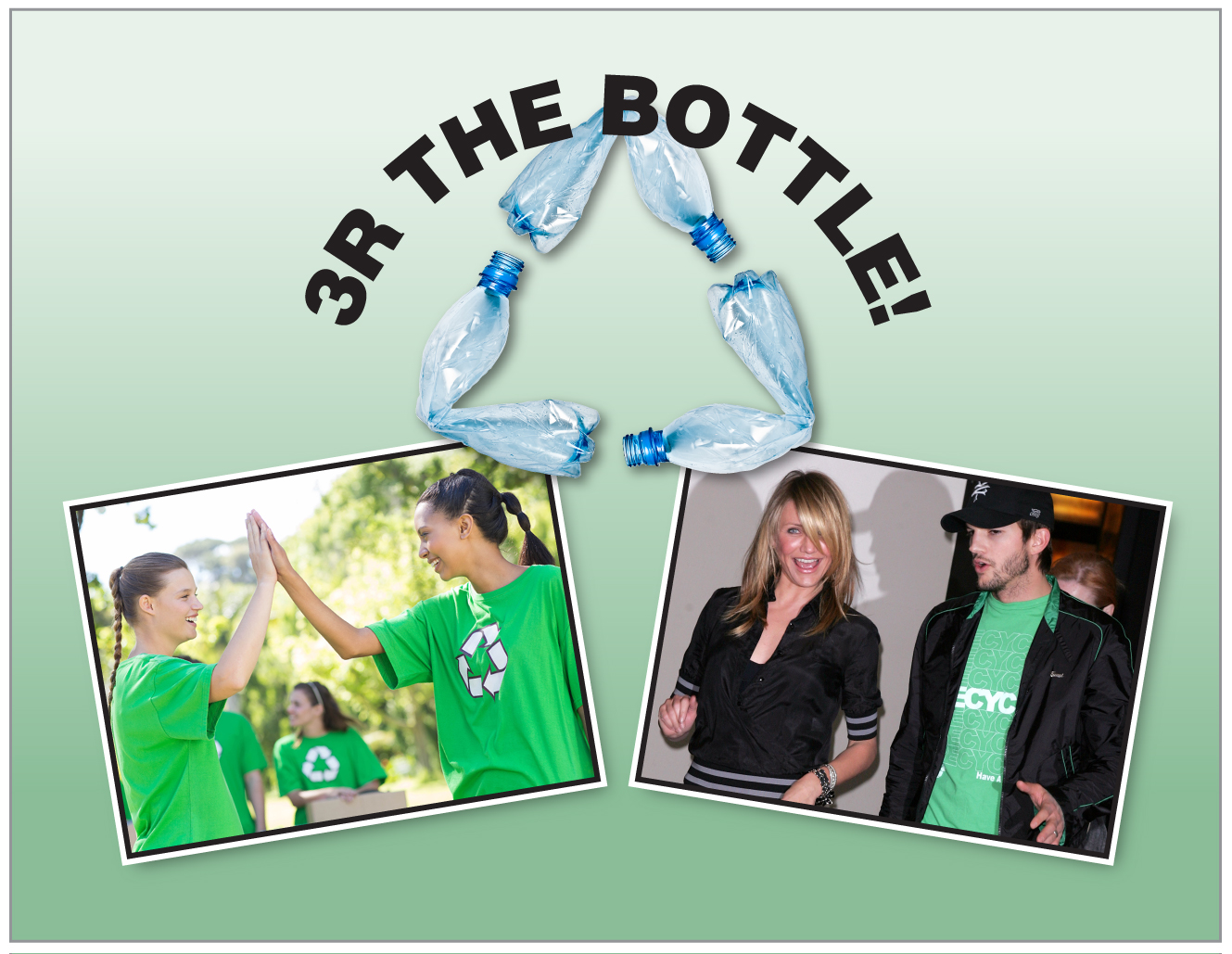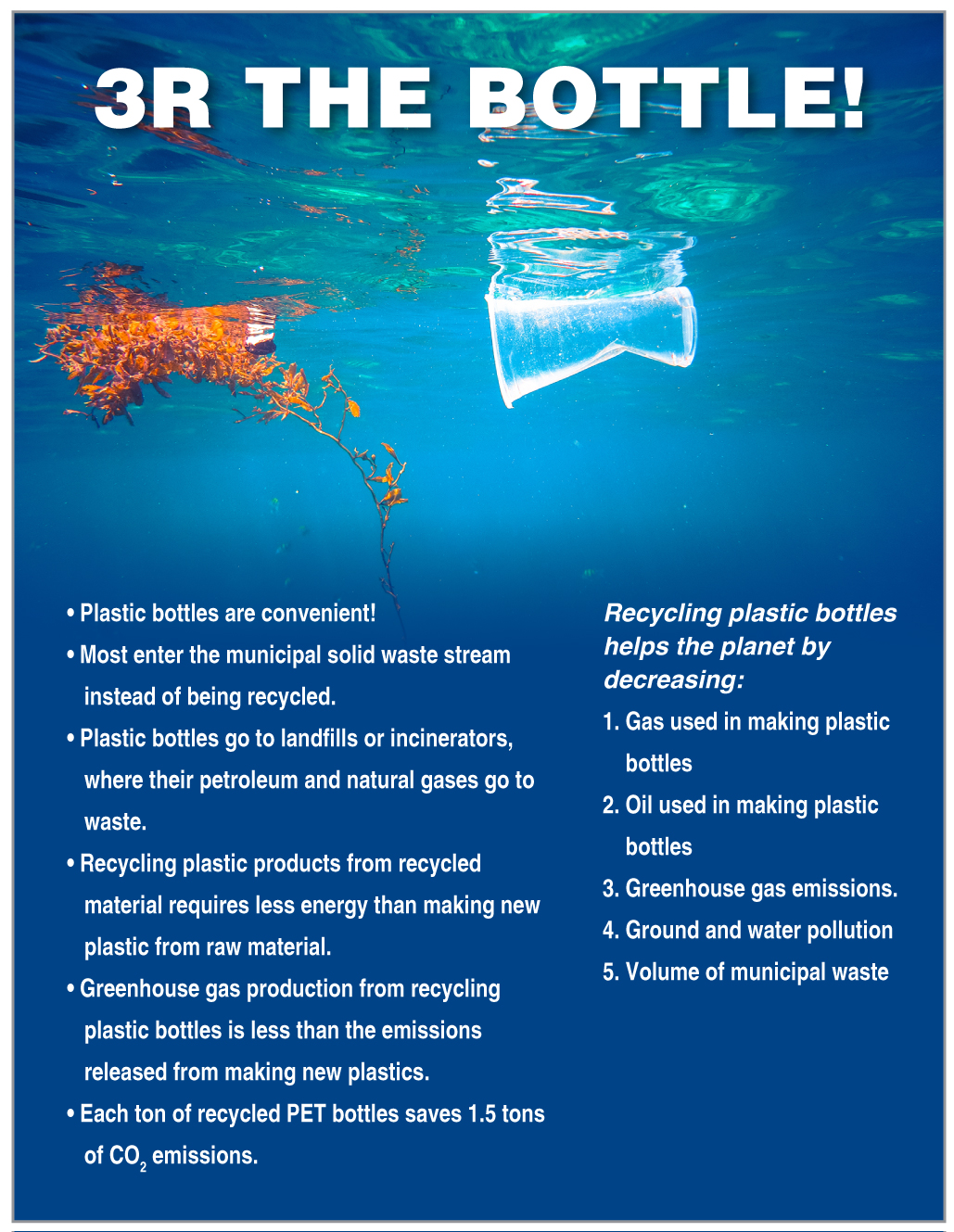15.1

You are a freshman and just finished your first week of class. You are settled into your dorm room, have purchased the textbooks for your classes, and now want to join a club or start an extracurricular activity. You believe that getting involved on campus will help you fit in and adjust to the new environment. All week you have been given flyers and pamphlets about different student organizations around campus. As you sit down at your desk to review some of them, you notice a flyer on your roommate's desk.
Asch, S. E. (1955). Opinions and social pressure. Scientific American, 193, 31–35.
Celebrities promote recycling on T-shirts. Retrieved from http://wardrobeadvice.com/celebrities-promote-recyling-on-t-shirts/
D’Alessandro, N. (2014, April 7). 22 Facts about plastic pollution (and 10 things we can do about it). Eco Watch. Obtained from http://www.ecowatch.com/22-facts-about-plastic-pollution-and-10-things-we-can-do-about-it-1881885971.html
GeoGarage (2012, June 20). Global call to stop plastic pollution presented at Rio Earth Summit. Retrieved from http://blog.geogarage.com/2012/06/global-call-to-stop-plastic-pollution.html
Lerche, J. (no date). How is saving plastic bottles helping the earth? Retrieved from http://homeguides.sfgate.com/saving-plastic-bottles-helping-earth-79229.html
Petty, R. E., & Cacioppo, J. T. (1986). The elaboration likelihood model of persuasion. Advances in Experimental Social Psychology, 19, 123–205.
Recycle symbol-reduce plastic bottles. Explore waste plastic, van plastic, and more! Retrieved from https://www.pinterest.com/pin/548876273306063170/
Warwickshire Community Recycling. Retrieved from http://www.changeagents.org.uk/warwickshire-community-recycling-social-enterprise




